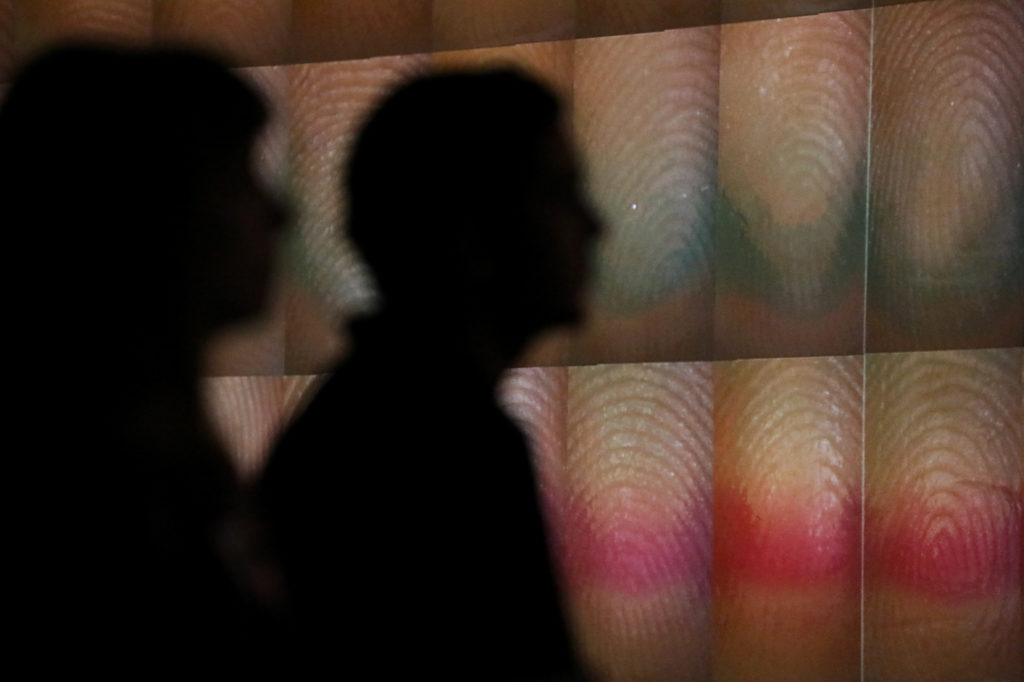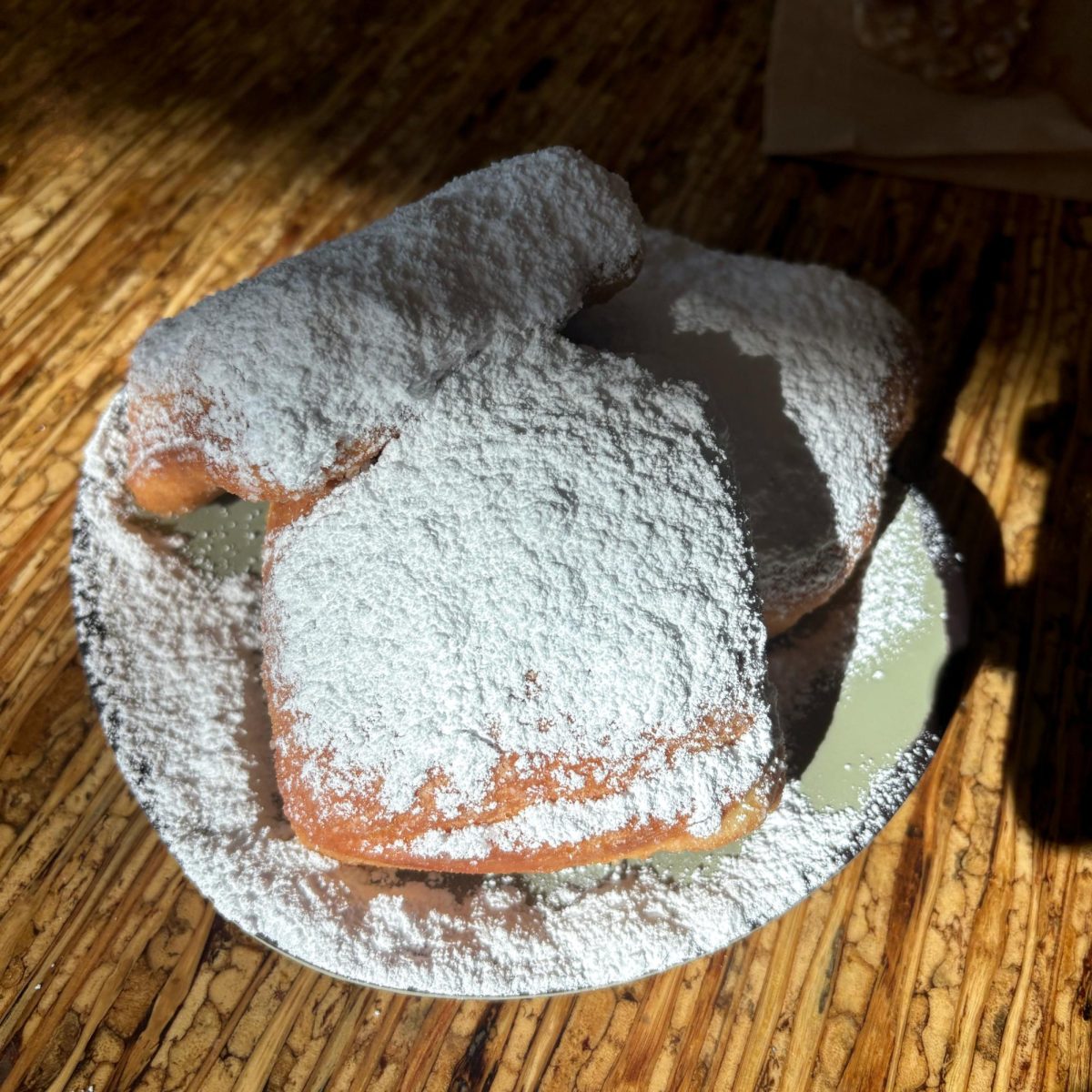Instead of using biometrics like heartbeats and fingerprints to track, identify and control, a new art exhibit uses human data to create a space that is unsettling and serene at once.
The Hirshhorn Museum and Sculpture Garden unveiled its newest exhibition “Pulse” Thursday, showcasing artist Rafael Lozano-Hemmer’s work for the first time in D.C. The exhibit spans three rooms filled with lights, sound waves and projected fingerprints that will display the vital signs of visitors through April 28.
Viewers first encounter a timeline that gives chronology to the human pulse’s history, staking the pulse’s importance within music, art and medicine.
The first installation, “Pulse Index,” scans each viewer’s fingerprints and displays their heartbeat on a massive wall. Ten thousand cells of fingerprints garnish the wall in an art deco style as the work unfolds into a landscape of prints.
The piece requires participants to place their fingers on a device called the pulsometer, which tracks the blood flow and opacity of each finger.
Lozano-Hemmer said during a preview tour Tuesday, that “Pulse Index” juxtaposes the surveillance associated with fingerprints and the sense of anonymity by projecting a sea of nameless images. Instead of keeping the data, the exhibit loses a print each time a new visitor interacts with the pulsometer.
“This technology is used to identify a single person but here, there is no tracking an individual,” Lozano-Hemmer said. “The system records the finger and pushes all previous recordings one down. With each new recoding, one is lost. We call this a ‘memento mori,’ which means we are here for a little bit of time.”
The next room contains “Pulse Tank,” a room with three curved tanks that house three stations to measure heart rates. Each tank is called a ripple tank, which allows scientists to see how waves flow in water.
[gwh_image id=”1070507″ credit=”Shane Bahn | Hatchet Photographer” align=”none” size=”embedded-img”]”Pulse,” a new exhibit at the Hirshorn Museum and Sculpture Garden, encourages visitor to interact with heartrate monitors. [/gwh_image]
The pulse sensors then convert the heartbeat to waves that travel down the tank and a light show above follows the tank’s rhythmic pattern, which is projected onto the wall. When two people interact with the installation together, the linear waves combine in a light show that registers both pulses.
Contrary to most other museum exhibits, the artwork requires the viewer to interact and become a part of the art.
“If you’re very artistic, I would like you to leave with a sense of wonder about the machines and the instruments to actually visualize data and metrics,” Lozano-Hemmer said. “On the other hand, if you’re scientific, I want you to then say these ripple tanks produce beautiful, aesthetic output that has a dialogue with history.”
As the Hirshhorn is a curved museum, Lozano-Hemmer said he modified his large scale works to complement the building’s architecture. “Pulse Tank” features curved chambers so that the reflection of the tanks create a trapezoid on the wall. The rectangles containing the fingerprints in “Pulse Index” changed sequences to better match the museum’s rounded canvas.
The last work, “Pulse Room,” leaves museumgoers vulnerable in a shadowed room with 200 incandescent light bulbs hanging high which cascade and sparkle in rhythm with a participants’ heartbeat. When a new visitor comes, they can place their hands on a heart rate sensor and watch all the bulbs light up along with their heartbeat.
When a visitor leaves the sensor, the heartbeat transfers to the bulbs on the ceiling and joins a chorus of past palpitations. The sound of 200 heartbeats played at once creates an ominous growl, and each time someone interacts with the piece, one of the heartbeats is lost.
The heartbeat, Lozano-Hemmer said, symbolizes not only an exhibit brimming with life, but one that challenges viewers to see their biological data as out of their control. In today’s volatile political climate, he said he wants his art to create a community where strangers feels safe and welcome.
“Art will not solve these problems but we are going to try our best to make people think about themselves and their surroundings differently,” he said.




